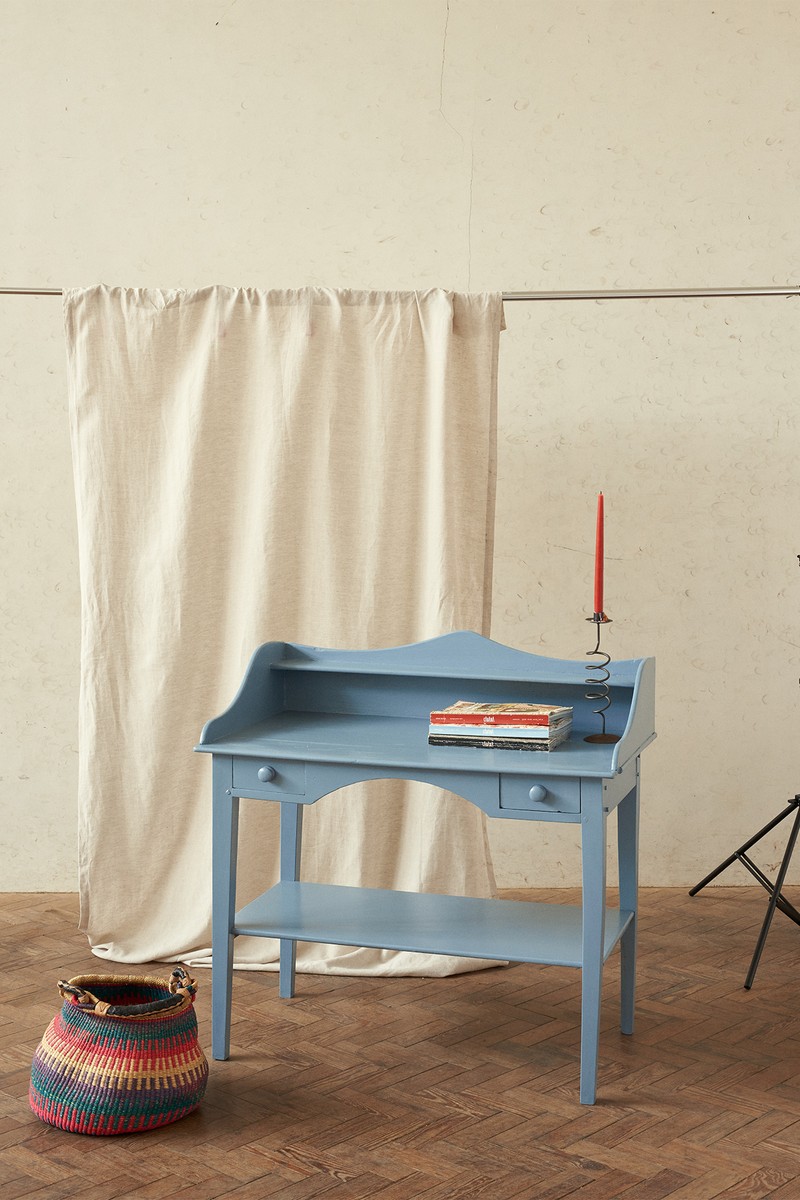Beginners’ Tips For Upcycling Furniture
First, Lucy explains how to get started…
If it’s your first time, start with smaller items. It might be something like a wooden lamp base or bookshelf or picture frame. Build up your confidence with those, then try tackling something like a wardrobe, some chairs or a pair of side tables. The most important thing is that it’s a piece of furniture that both excites you and fits nicely in your space – so don’t forget to measure up the area before you start any upcycling projects.
Look for wooden pieces with interesting details. These will translate well when painted, like a curved edge or an interesting piece of joinery. If you want something easier, choose an item which doesn’t require too much prep work in terms of sanding, but look for good-quality wood. You can always take off any varnish and add wax to get rid of surface scratches, but the bare bones of the piece need to be solid.
Make sure you dedicate enough time to the preparation. It’s easy to get overexcited and just dive straight in, but you’ll regret it in the long run. Make sure the item’s surfaces have been fully cleaned (I use sugar soap), ensure you have tarps laid down, paint everything slowly and methodically, and let the coats dry. It’s all these small details that add up to a good end-result.
If the furniture is in good nick, you shouldn’t need specialist equipment. A paintbrush, paint, masking tape and tarp (or old sheets) are the only essentials.
Hardware is a great place to start. Painting wooden pieces is your best friend when it comes to entry-level upcycling – reviving elements like weaves and rattan can be quite tricky. Painting lampshades can also be a lot of fun if you want to do something creative that will have a lot of impact. Unfortunately, glazing can be quite challenging and I wouldn’t recommend it for beginners.
I’ve recently been working on my floor-to-ceiling bedroom wardrobes. It’s no small feat but I’ve been painting the yellow pine wood a different colour to match the plaster wall colour. I decided on a gloss finish instead of standard matte – I was a bit apprehensive as you need to get the paintwork spot on, but it looks great. I’m proud to have repurposed the existing in-built wardrobes rather than ripping them out and investing in new ones.
Now Patrick talks us through the different painting options…
For most furniture, we’d recommend a modern eggshell for everyday pieces that get a lot of use or a full gloss for a more glamourous, lacquered finish. Both will work on any wood or MDF and on an array of furniture – from a small coffee table to a more ambitious chest of drawers or wardrobe. It really just comes down to your desired aesthetic.
If you’re starting from scratch, you need to keep it simple on your first attempt. I’d recommend sticking to a flat finish – i.e. just paint – but as your confidence grows, so can your creativity. Even some low-tack taping will help you create a cool design, like a harlequin pattern, or if your artistic skills can stretch to illustration you could even try some freehand. You could also use glazes to create specialist paint finishes, such as marbling or faux stone like malachite.
The basic equipment you might need includes synthetic bristle brushes, coarse and fine sandpaper (coarse to get a key and fine between each coat once dry) and your chosen pot of paint. Remember to remove any brass knobs or hardware – you can always refit these once you’re finished.
Make sure the surface will take the paint before you start. Powder-coated, plastic or melamine surfaces can pose a problem. Then, sand it down to get a key. Wash it clean with a diluted sugar soap solution. Then paint on a diluted coat of interior wood primer/undercoat in the appropriate tone for your topcoat, ensuring it fully dries before you apply your two topcoats, allowing them to dry completely between each coat. All our product advice sheets can be found online at Farrow & Ball.
Upcycled furniture can add personality to any room. But really it’s about avoiding waste and finding the potential in something that was once unloved. That’s arguably why there’s been a huge resurgence in specialist paint finishes of late – think Charleston or Villa Santo Sospir. It’s about elevating the banal into something exciting. Colour is dependent on mood and the space, but we’re seeing significant demand for claret wine reds (Preference Red), mid-century greens (Bancha) and deep blues (Wine Dark).
Visit Vinterior.co for more information.
Shop The Products From The Vinterior X Farrow & Ball Collaboration Below
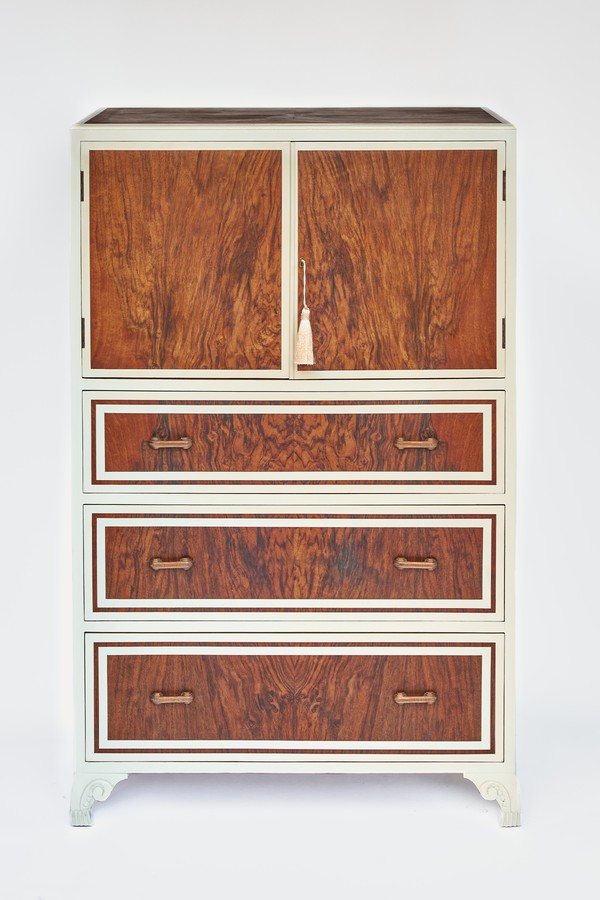
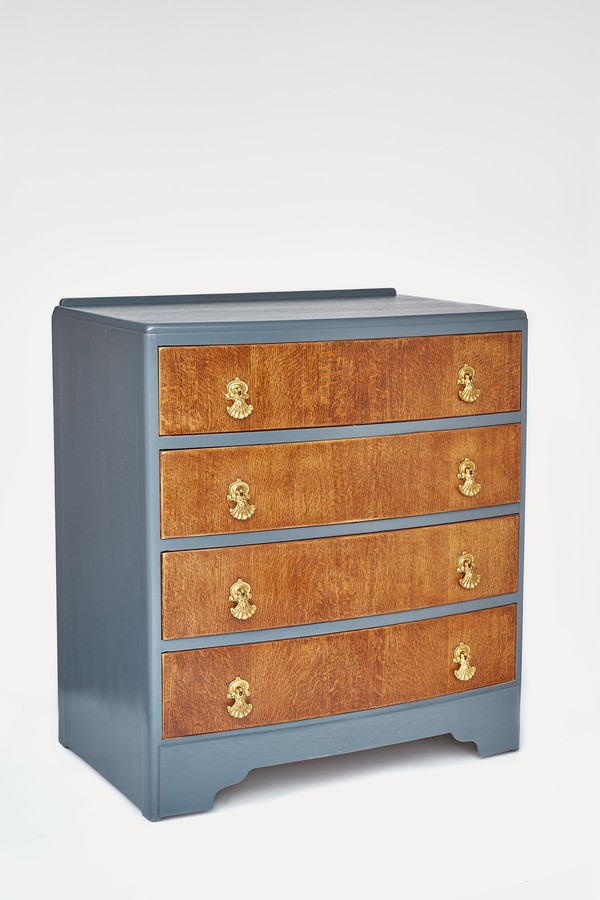
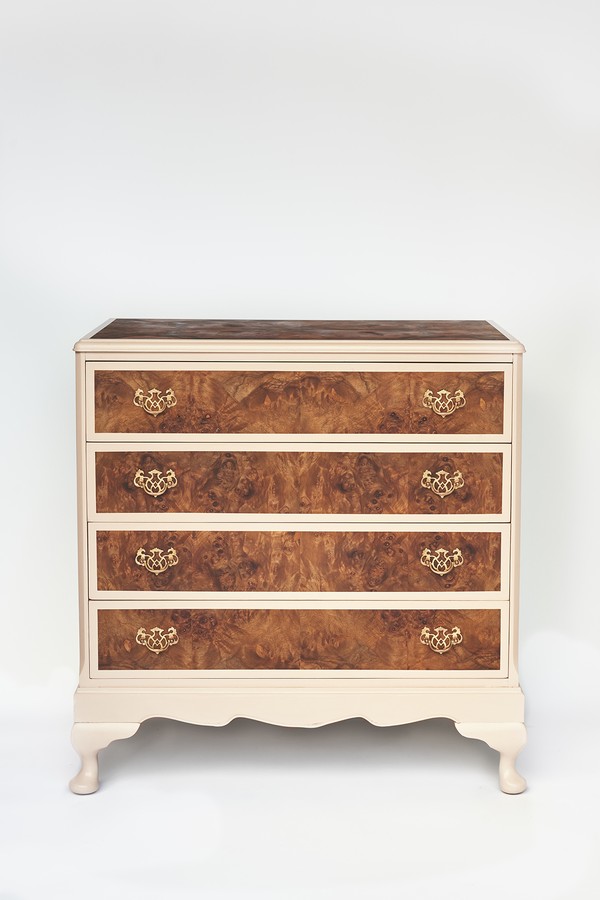
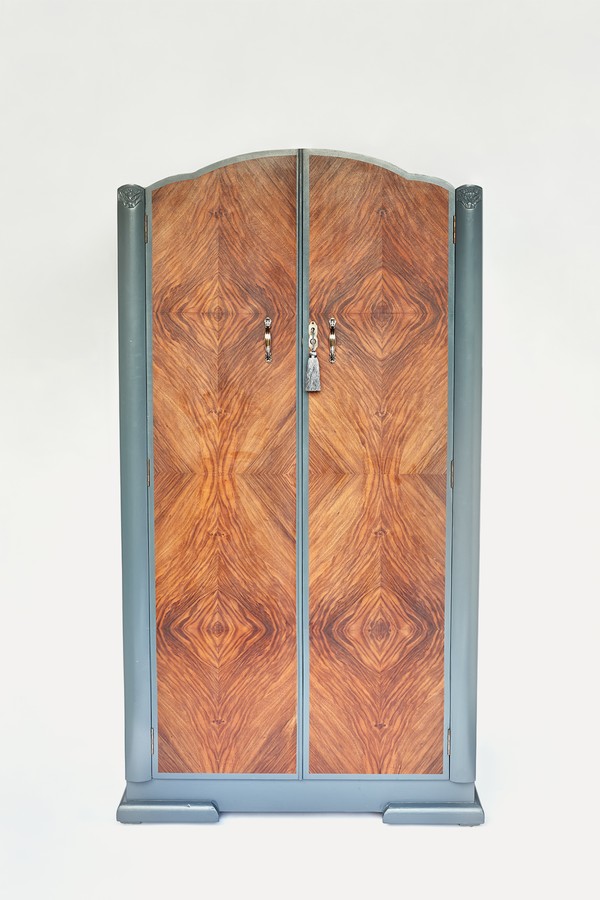
DISCLAIMER: We endeavour to always credit the correct original source of every image we use. If you think a credit may be incorrect, please contact us at info@sheerluxe.com.
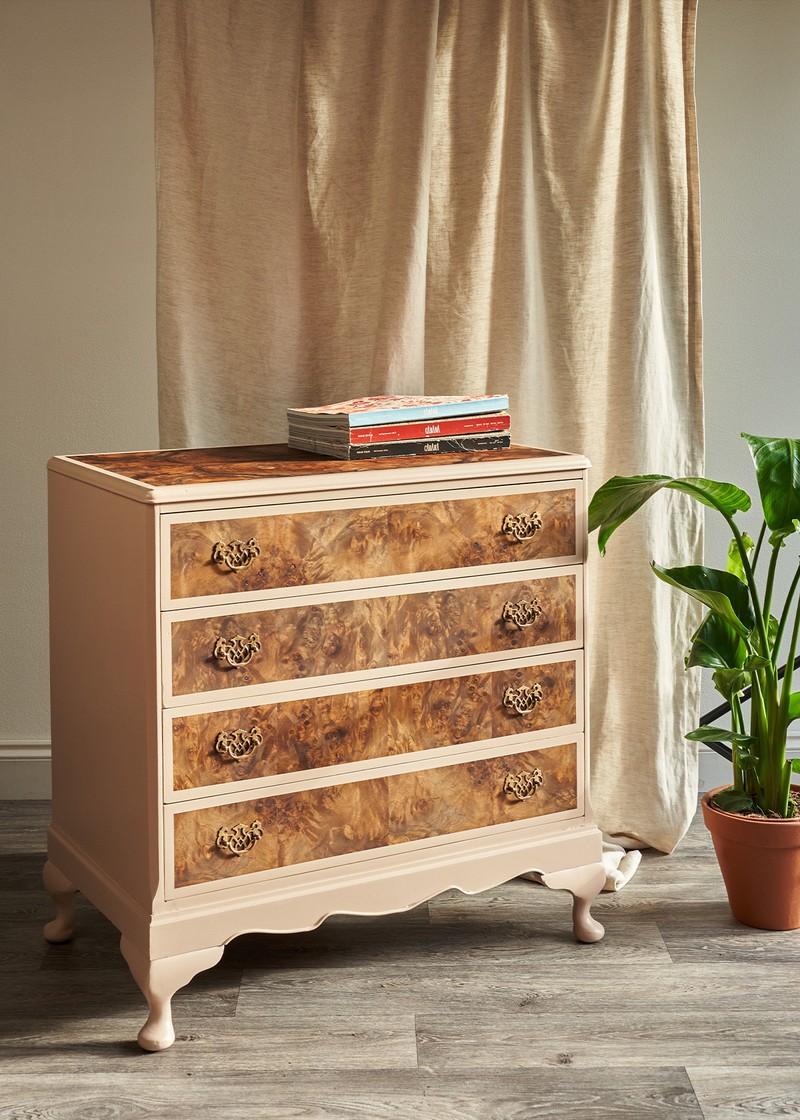
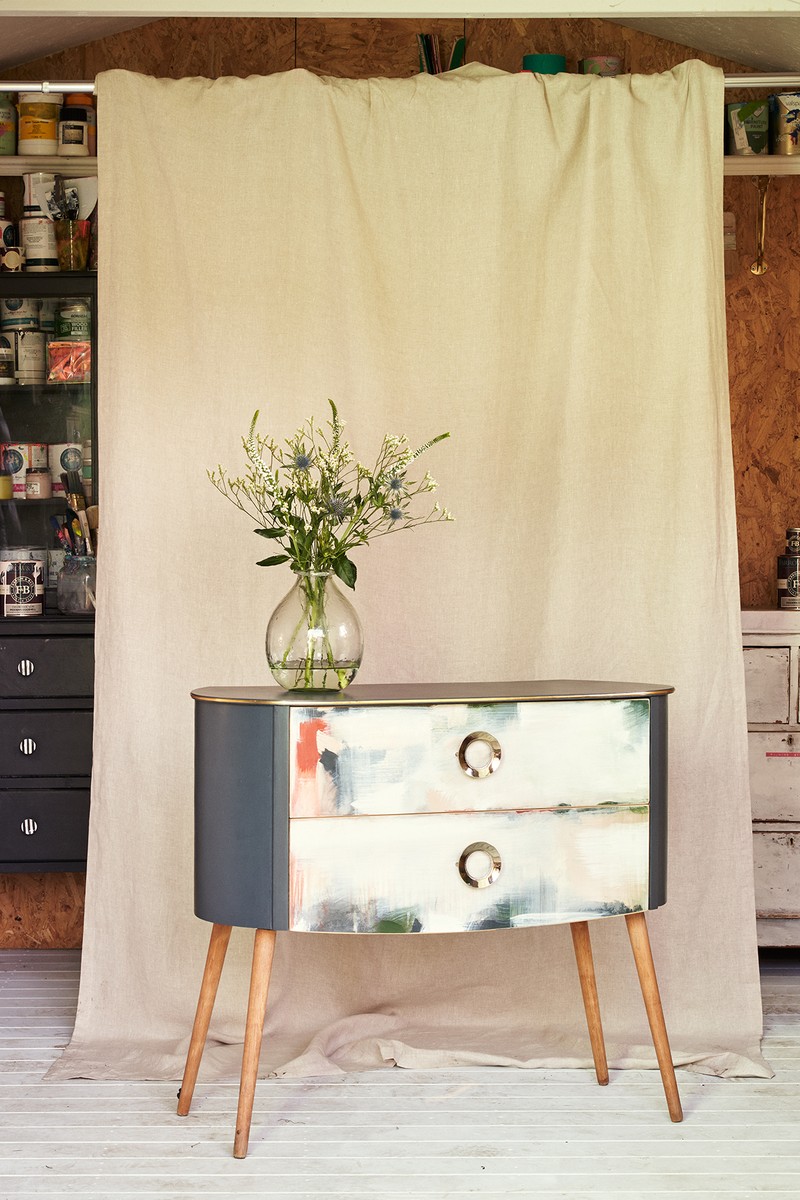
/https%3A%2F%2Fsw18.sheerluxe.com%2Fsites%2Fsheerluxe%2Ffiles%2Farticles%2F2023%2F02%2Ffurniture-refurbishment.png?itok=370hq8z1)
